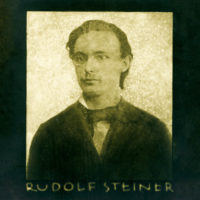What’s next in the “fight” against carbon dioxide? A change of thought.
We usually associate “CO₂” with the idea that a molecule of carbon dioxide consists of one atom of carbon (C) and two atoms of oxygen (O), whereupon the three little balls from the atom-and-molecule model of our schooldays hazily appear in our consciousness. But, originally, “CO₂” was nothing more than a quantitative ratio: what we call carbon dioxide consists, when quantitatively analysed, of two parts oxygen and one part carbon.
Only a Hypotheses
In an article titled “What is a Particle?,” New York-based science journalist Natalie Wolchover wrote: “It has been thought of as many things: a point-like object, an excitation of a field, a speck of pure math that has cut into reality. But never has physicists’ conception of a particle changed more than it is changing now. … ‘We say they are “fundamental,”’ said Xiao-Gang Wen, a theoretical physicist at the Massachusetts Institute of Technology. ‘But that’s just a [way to say] to students, “Don’t ask! I don’t know the answer. It’s fundamental; don’t ask anymore.”’”1
So, it’s not a given that we should imagine the “building blocks” of matter to be spheres. In fact, what they are exactly is still entirely open.2 This clears the way for us to look at what we call carbon or carbon dioxide without relying on the concept of points or point-like objects.
Qualities of Matter
The elements of the periodic table are not atoms (in the form of the classical concept of points), but rather, they are qualities of material manifestation. They are different gestures through which the spiritual reveals itself in the earthly world and can be explored through the approach of spiritual science.3 The specific gesture of a phenomenon is found by moving from the external sensory observation, through what Goethe called a “sensory-moral experience,” into the inner soul-spiritual view. Following this approach in his Agriculture Course, Rudolf Steiner characterised elements such as carbon, oxygen, nitrogen, and hydrogen as Beings, as divine entities. For example, in the latest edition of the German volume of lectures, it says: “This carbon, you see, is indeed [a god who has descended] in the modern age from a very aristocratic position to a very, very plebeian situation—and many other beings in the world have subsequently followed this path.”4
Beings instead of Particles
These Beings (e.g., carbon, oxygen, nitrogen, hydrogen) that are considered within the context of macrocosmic nature that is presented in the Agriculture Course, when brought together, ultimately result in the human being. Rudolf Steiner explains this explicitly in his medical lectures: “You will see that just as the physical organisation is connected with carbon, the etheric organisation with oxygen, the astral organisation with nitrogen, so the ‘I’-organisation is connected with hydrogen.”5
What appears in the world around us as hydrogen, nitrogen, oxygen, and carbon appears in human beings—identical in regards to essence—in the form of the members of our bodily organisation. Just as in nature, lime (from below upwards) and silica (from above downwards) join together, the human being is situated between forces of hardening (lime) and dissolving (silica). Steiner describes this middle position as follows (using carbon in plants as an example): “Down below, the lime wants to seize [the plants] with tentacles, and up above, the silica wants to make them as fine and slender and fibrous as aquatic plants, but, in the middle, shaping our true plant forms, stands carbon, which orders it all.”6
In a lesson on December 17, 1911, about the so-called “cognitive ritual work,” Steiner describes the divine entities that make up our various bodies: the Spirits of Form (Exusiai) together with the Thrones form the physical body; the Spirits of Movement (Dynamis), together with the Cherubim, form the etheric body; and the Spirits of Wisdom (Kyriotetes), together with the Seraphim, form the astral body.7
From Greenhouse Gas to God
So, by way of this very condensed consideration, we have reached an understanding of “carbon” as the interaction of the divine entities of the Exusiai and the Thrones. In carbon dioxide, the hierarchical beings of the Exusiai and the Thrones (physical body or carbon) enter into a connection with the Dynamis and the Cherubim (etheric body or oxygen). And this occurs in such a way that a quantitative measurement carried out by human beings on carbon dioxide results in a quantitative ratio of 1 to 2.
In this way, our view has turned from a microscopic conception of points to a macroscopic conception of divine being. Steiner’s consideration of carbon in connection with other “elements” points to the task of agriculture: to cultivate the planetary spirit in its earthly membering into the physical (carbon), etheric (oxygen), soulish (nitrogen), and spirit-‘I’-ness (hydrogen), in a healthy way corresponding to the Turning Point of Time. In other words, the task of agriculture is to build a macrocosmic human being in the free play between lime and silica.
This also points in the right direction for dealing with what we are now inclined to dismiss, in our “plebian” way, as a greenhouse gas (carbon dioxide). “CO₂” is not an atom composed of little balls. It is a working of divine entities that are dedicated to the task of shaping the earthly world. Our task is to enter into a cooperative relationship with them, one that corresponds with the evolution of the world. We should not fight them as a greenhouse gas, burdened with an atomic misconception, and neither should we continue to cause them suffering out of the self-interest and ignorance of an unbridled consumer society.
Translation Joshua Kelberman
Photo Martina Stokow
Footnotes
- Natalie Wolchover, “What is a Particle,” Quanta Magazine (Nov. 12, 2020).
- See also, Martin Wigand, Quantum Physics and Spiritual Science: The Quest for the Foundations of the Material World (self-published, 2023). German original: Quantenphysik, Anthroposophie, Logos-Mysterium: Was ist wirklich? (Stuttgart: Schneider, 2021)
- Rudolf Steiner, Polarities in the Evolution of Humanity: West and East, Materialism and Mysticism, Knowledge and Belief, CW 197 (Forest Row, East Sussex: Rudolf Steiner Press, 2022), lecture in Stuttgart on July 25, 1920.
- Rudolf Steiner, Landwirtschaftlicher Kurs, GA 327 (Basel: Rudolf Steiner Verlag, 2022), lecture in Breslau on June 11, 1924, p. 53. Square brackets [ ] within quotation are changes indicated by the editors of the 2022 GA edition (as noted, p. 420); cf. Rudolf Steiner, Agriculture Course (Forest Row, East Sussex: Rudolf Steiner Press, 2004), p. 43: “Carbon indeed has fallen in our time from a highly aristocratic status to a very plebeian one. Alas, how many other beings of the Universe have followed it along the same sad way!”
- Rudolf Steiner, Physiology and Healing: Treatment, Therapy, and Hygiene (Forest Row, East Sussex: Rudolf Steiner Press, 2013), lecture in Dornach on Oct. 27, 1922, p.84.
- Rudolf Steiner, Agriculture Course, lecture in Breslau of June 11, 1924, p. 55 (see note 4).
- Rudolf Steiner, Lehrstunden für Teilnehmende der erkenntniskultischen Arbeit 1906–1924, [Lessons for participants in cognitive ritual work 1906-1924 ] GA 265a (Basel: Rudolf Steiner Verlag, 2024); cf. Rudolf Steiner, An Outline of Spiritual Science, CW 13 (Tiburon, CA: Chadwick Library Press, 2021).





